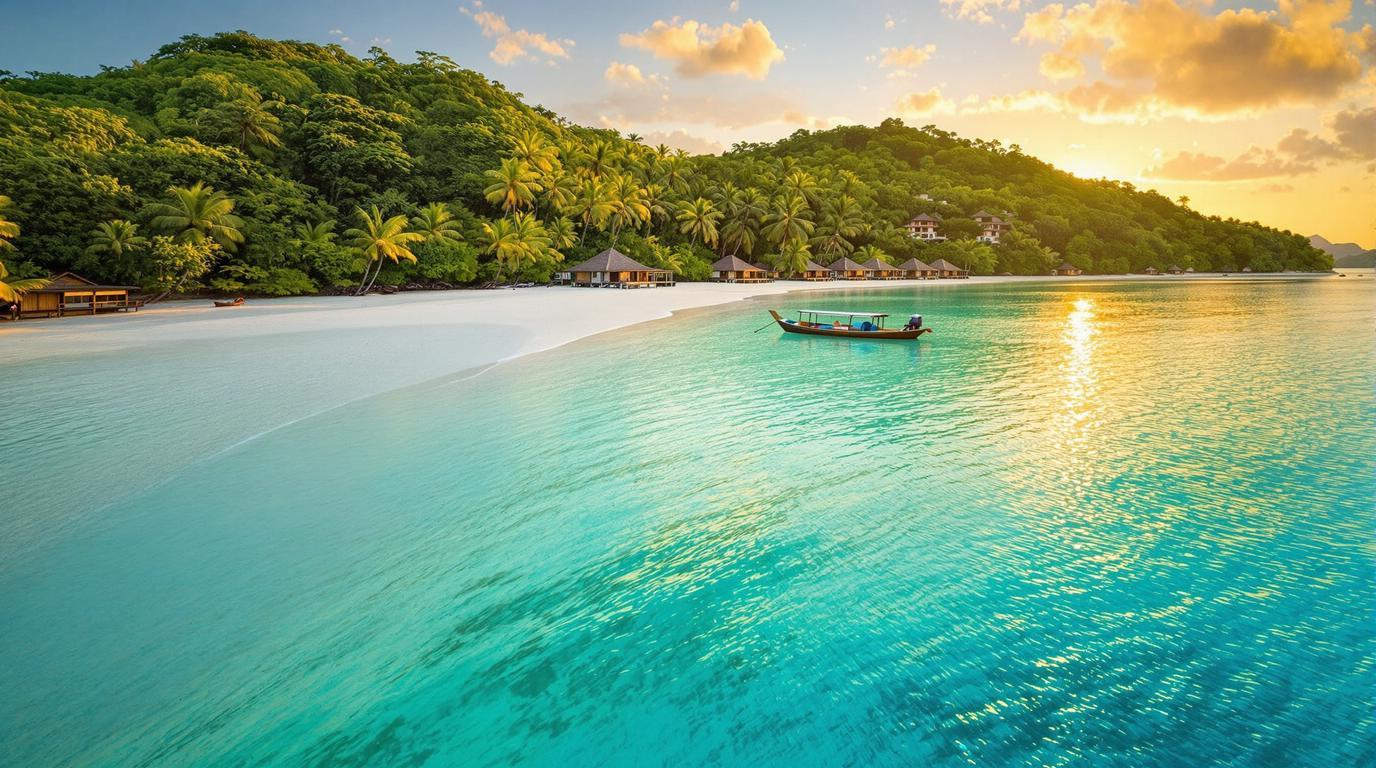Stepping onto the shores of Koh Phayam feels like discovering Thailand before tourism transformed its popular islands. While Koh Samui’s beaches overflow with sunbathers and vendors, this hidden paradise offers pristine sands and crystal waters that locals describe as “Thailand as it once was.” With fewer than 500 permanent residents and almost no cars, this unspoiled gem delivers what every traveler secretly hopes for—authenticity without the crowds.
The last authentic Thai island experience
Just a short boat ride from Ranong province on Thailand’s western coast, Koh Phayam remains remarkably undeveloped compared to its famous cousins. Unlike Koh Samui’s concrete sprawl, Phayam features just a handful of family-run bungalows tucked discreetly among swaying palms.
“We’ve been coming here for 15 years, and it’s still the cleanest beach I’ve ever seen in Thailand,” says Martin Croft, an Australian expatriate who visits annually. “The water visibility is often 10-15 meters—you can see your shadow on the seafloor!”
Pristine beaches that outshine the famous islands
Ao Yai (Long Beach) stretches for nearly two kilometers along the western coast, with powdery white sand that squeaks underfoot. Unlike Samui’s beaches, which require daily cleaning crews, Phayam’s shores remain naturally immaculate thanks to minimal foot traffic and strong conservation ethics among visitors and locals alike.
The northern end of Buffalo Bay offers the island’s most photogenic scenery, with dramatic karst formations similar to those in China’s misty Avatar mountains, though on a smaller scale. During low tide, natural pools form among the rocks, creating private bathing spots warmed by the tropical sun.
A vehicle-free paradise
Like Greece’s famous car-free islands, Koh Phayam restricts motorized vehicles. Narrow concrete paths crisscross the island, designed for motorbikes and the occasional bicycle. This absence of cars preserves both air quality and the peaceful atmosphere that’s increasingly rare in Thailand’s tourism hotspots.
Cashew forests and hidden lagoons
Inland, cashew orchards replace the coconut plantations common throughout Thailand’s islands. During February and March, the sweet scent of cashew apples perfumes the island, with farmers offering freshly roasted nuts to passing travelers.
Hidden behind a ring of mangroves on the eastern shore, a secret freshwater lagoon provides a tranquil swimming spot. Local fisherman Somchai Thammasak notes, “Even Thais don’t know about this place. My grandfather showed me when I was small, and now I bring my own children.”
Conscious tourism keeping paradise pristine
Unlike Koh Samui’s rapid development, Phayam’s community has embraced slow, sustainable growth. Most accommodations operate on solar power, with rainwater collection systems and organic gardens supplying restaurants. The island’s development plan explicitly limits building height and beachfront structures, preserving the natural beauty that draws discerning travelers.
This commitment to preservation creates experiences reminiscent of Europe’s most cherished island hideaways, though with distinctly Thai character.
When to experience this secret paradise
November through April offers ideal weather, with the December-February window providing perfect beach conditions. During these months, water visibility reaches its peak for snorkeling among healthy coral gardens teeming with tropical fish.
Each morning, witness golden light filtering through ancient temple structures that evoke Japan’s preserved imperial architecture in their attention to harmonious design.
For photography enthusiasts, the island’s western beaches offer sunset views rivaling Australia’s most spectacular dawn panoramas—but from the opposite horizon.
Koh Phayam represents Thailand’s increasingly rare treasure—an island where nature still dictates the rhythm of life, where beaches remain untouched by mass tourism, and where travelers can experience the legendary beauty that first put Thai islands on the global map. Here, finally, is a beach cleaner than any on Koh Samui, on an island still waiting to be discovered.
